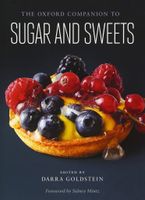Advertisement
The Spread of Cacao
Published 2015
Besides the (drinkable) chocolate breakfast, desserts in Italy and France at this time began to feature chocolate as a flavoring in custards and creams. Across the Channel, the 1726 edition of
The increased consumption of chocolate among Europeans was made possible by the spread of cacao plantations throughout the Caribbean. Following its introduction in the Caribbean by the Spanish, the English, French, and Dutch were soon experimenting with cacao in Brazil, Curaçao, Guadalupe, Hispaniola, Jamaica (which soon became England’s main source of cacao), Suriname, the West Indies, and Venezuela (and later in Africa and Indonesia). With cacao’s increased importance in the colonies came increased production, which led to the founding of two early chocolate factories, the first in Providence, Rhode Island (Brown Brothers in 1752), and the second in Dorchester, Massachusetts (Walter Baker and Co. in 1765). The founding of Baker’s Chocolate (by a chocolatier and a physician), the year after a smallpox epidemic in Boston, is perhaps not coincidental. Chocolate was frequently recommended for those afflicted with smallpox. See baker’s.


